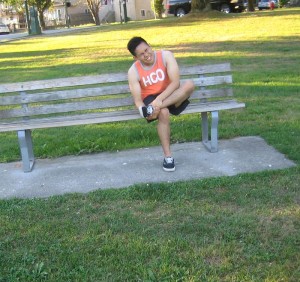Hallux limitus simply means an inflexible big toe joint. This condition is described by diminished range of movement along with soreness at the big toe joint. As time passes by, the limited range of motion can lead to arthritis of the big toe joint. The reduced range of motion that causes hallux arthritis typically occurs but it is not often recognized until the big toe becomes sore.
What are the signs and symptoms of hallux limitus?
- Bony enlargement or bump at the upper part of the big toe joint
- Pain at the big toe joint that is aggravated by activity
- Bone spurs and narrowing of the joint space at the big toe joint which is usually seen on the X-ray results
- Diminished range of movement of the big toe joint
- Out-toeing or walking like a duck
- Development of callus on the side of the big toe
Causes of hallux limitus
It is important to note that hallux limitus is most often triggered by abnormal foot structure. An elevated 1st metatarsal bone such as in flat feet can hinder the range of motion of the big toe. The unusual length of either 2nd or 1st metatarsal bone can cause hallux limitus.
Morton’s toe is another name for a second toe that is longer in length than the big toe. This type of foot is quite prone to the discomfort of hallux limitus.

Other causes of hallux limitus
- Acute trauma to the big toe joint such as a fracture
- Recurring trauma to the big toe joint such as turf toe which is a common overuse injury in sports
- Inflammatory conditions such as psoriatic arthritis, rheumatoid arthritis or gout
The diminished range of motion linked with hallux limitus will sooner or later progress to complete range of motion which is called hallux rigidus. This condition can be a result of either chronic or acute joint damage that leads to the two bones of the metatarsophalangeal joint to fuse together.
Treatment of hallux limitus
Once a diagnosis of hallux limitus is made, there are a number of possible treatment options.
- Rest, application of ice, compression and elevation (RICE) of the affected limb
- Proper stretching of the big toe
- Use of orthotics or arch supports using special modifications to relieve the stress off the big toe.
- Special shoes such as those with rocker soles or stiff-soled shoes since these help reduce the motion of the big toe joint.
- Over-the-counter pads can be added to the interior of the shoe
- Surgery is an option if the conservative measures fail. Surgery involves procedures to restore motion to a certain degree or fuse the joint entirely to prevent any motion.
With each step an individual takes, a certain amount of flexibility of the big toe is needed. This will allow the foot to efficiently absorb and transfer body weight as the feet strikes the ground. Once the flexibility of the foot is compromised just like in hallux limitus, the other body joints might also be involved.
